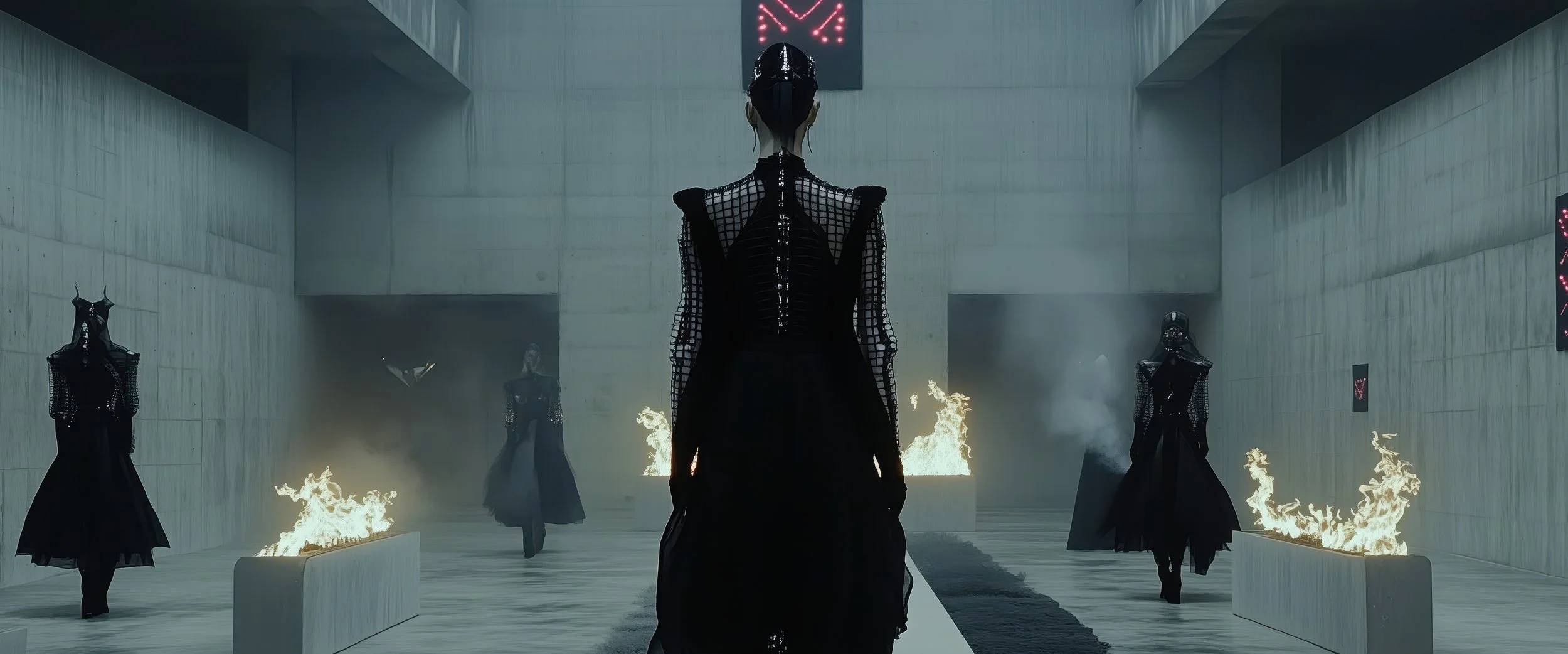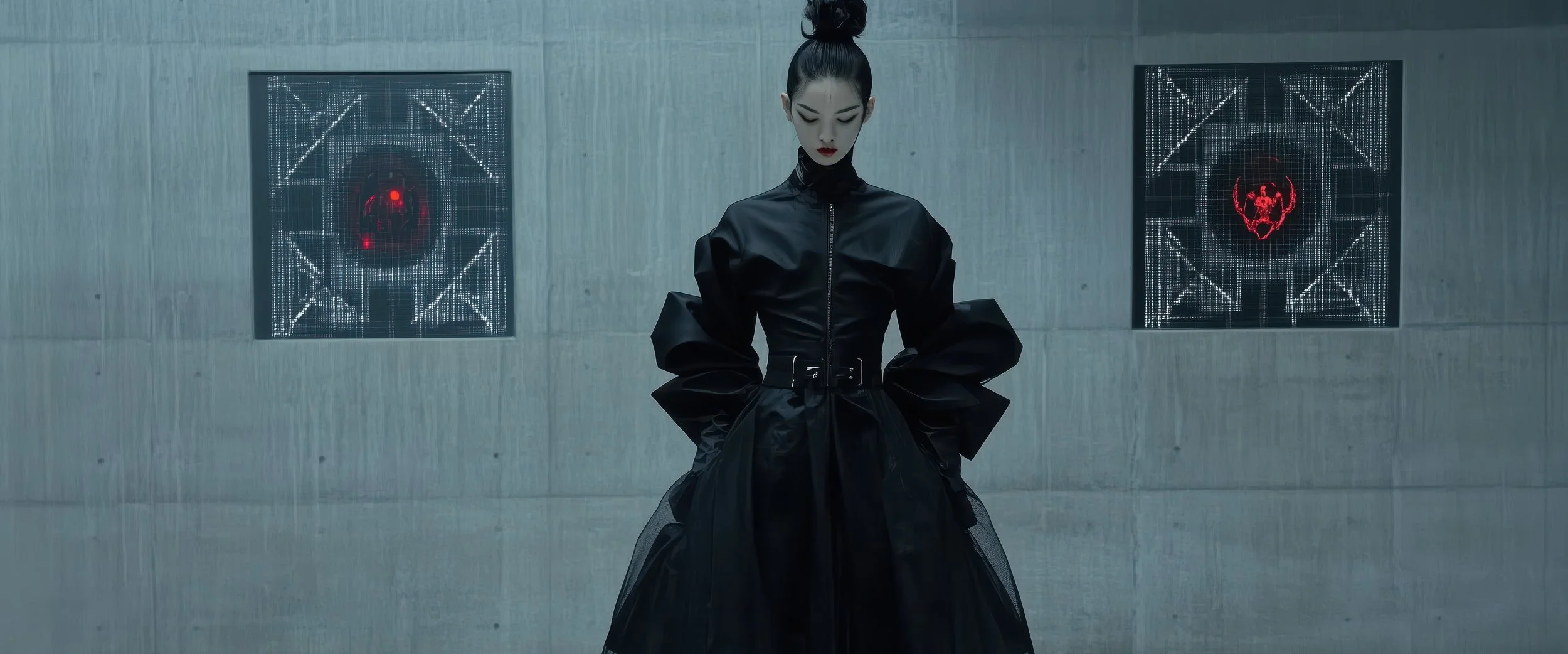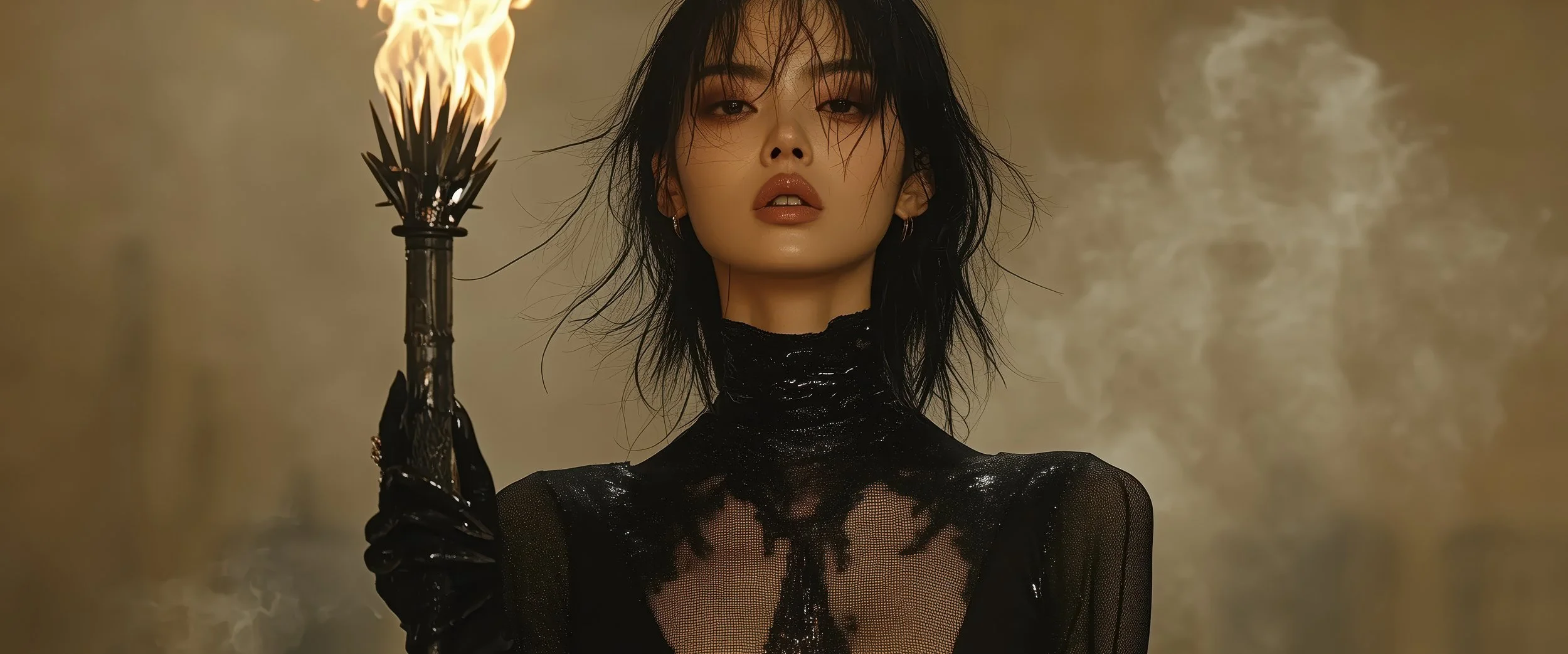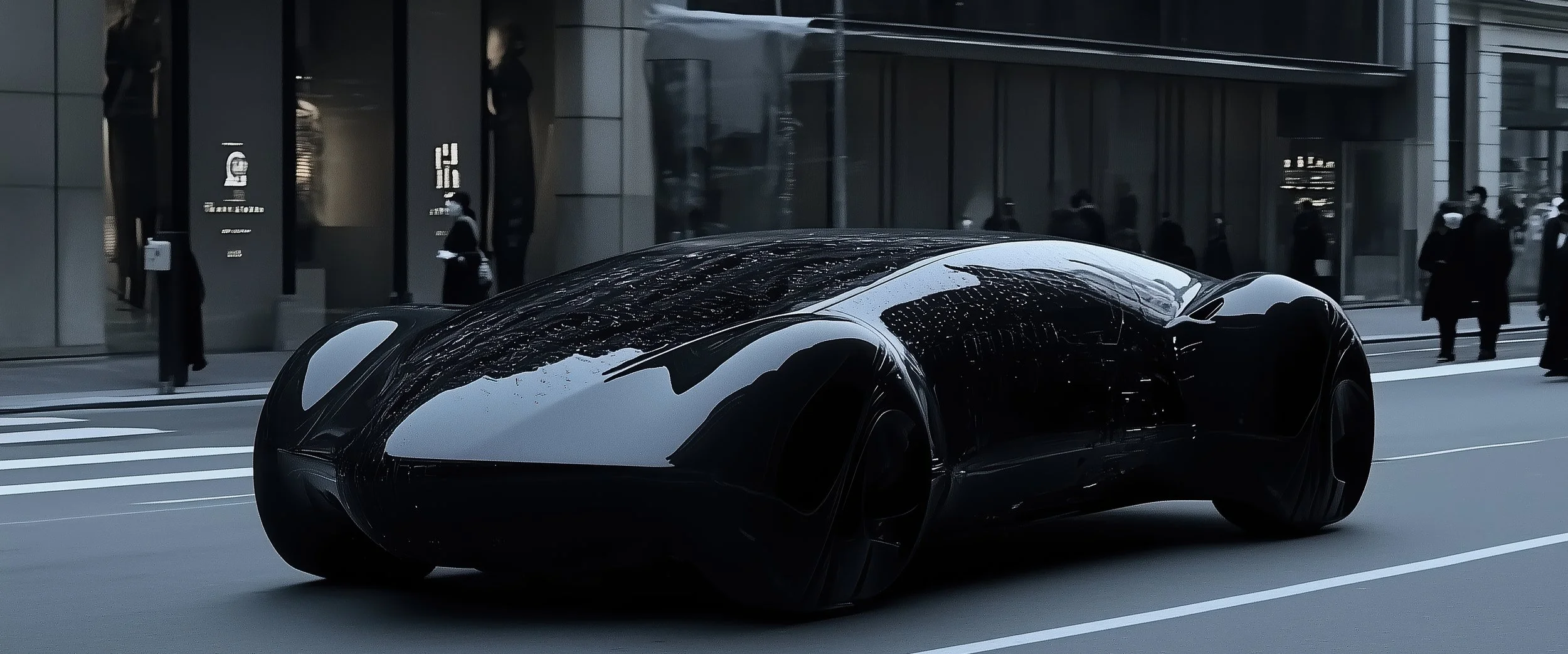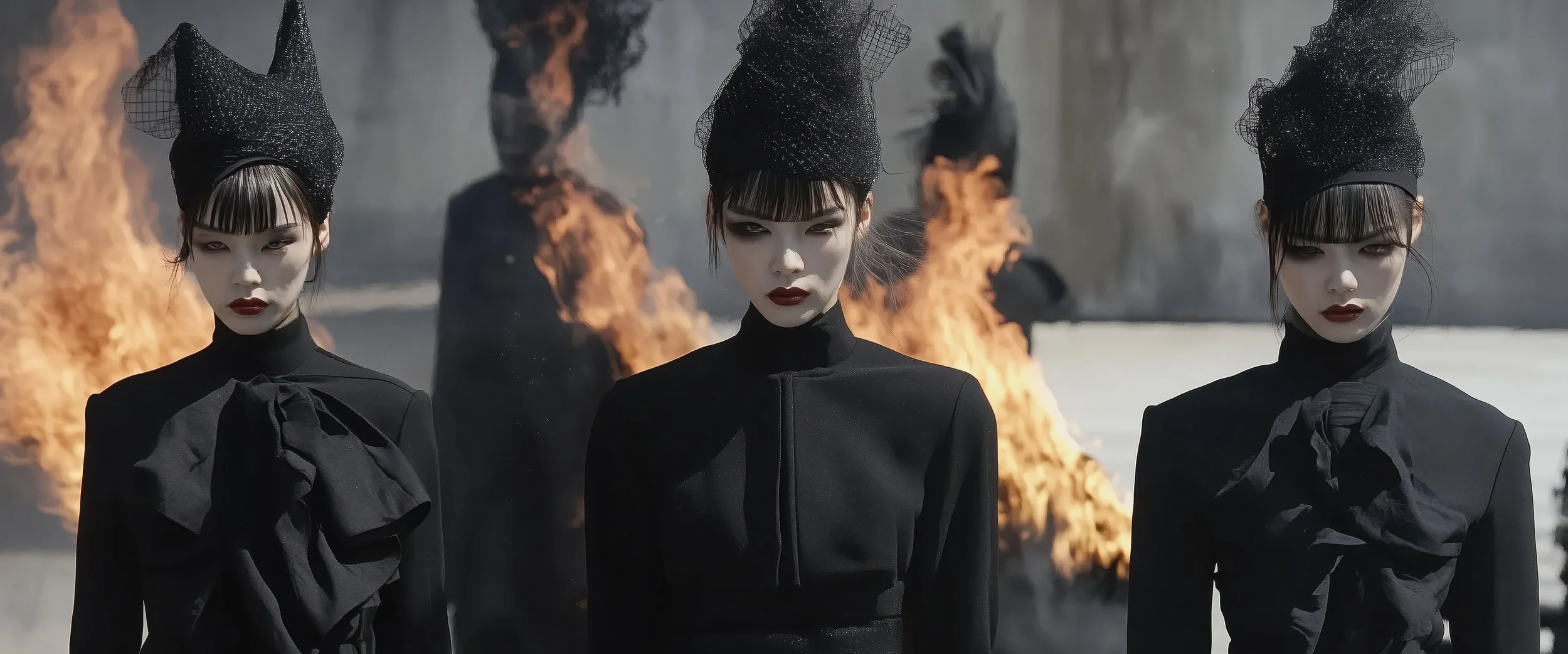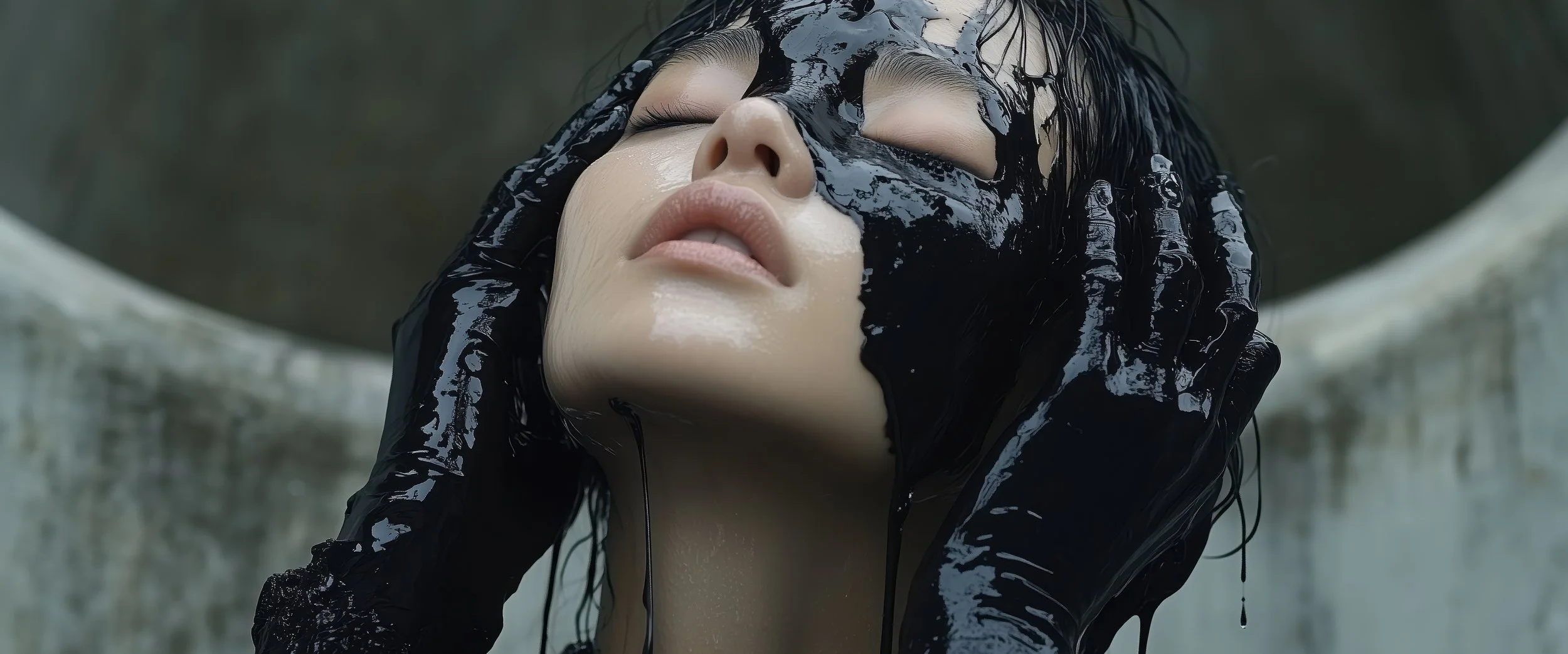Black Energy — Ritual Fashion, Dark AI Beauty & Gothic Ceremonial Aesthetics
Black Energy is a dystopian fashion and AI art gallery exploring power, submission, and posthuman beauty through dark cinematic visuals. In these haunting scenes, gothic women, futuristic witches, ritual soldiers, and symbolic luxury vehicles enact a slow ritual of obedience and transformation—drenched in oil, surrounded by fire, adorned in latex and velvet shadows.
Combining cyber-satanic fashion, avant-garde femininity, and occult symbolism, Black Energy reflects the seductive violence of control in the age of digital rituals and fossil capital. Each chapter of this gallery unfolds like a scene from an experimental film, where fashion becomes a weapon and aesthetic becomes ideology.
This gallery is part of the Hybrid Collapse project—a cross-platform exploration of biopolitics, digital myths, and speculative AI aesthetics.
I. Chamber of Flame and Order
This concrete sanctum is a temple of black energy, where fire becomes a symbol of control, purification, and transcendent fear. The central figure in structured black latex, flanked by priestesses in symmetrical formation, evokes a ritual of order and submission. The digital sigils, sterile walls, and ceremonial choreography suggest a cyber-theocratic cult, where sacrifice has merged with code.
Visually, the scene plays on stark contrasts: black garments against white marble, fire reflecting off polished floors, faces hidden behind veils. The composition holds in wide and medium shots, emphasizing geometry and ritual symmetry. Glossy textures, pale light, and engineered smoke craft an atmosphere where mysticism is rendered surgical — a dystopian elegance born from fossil worship.
II. Ritual Aesthetics in Black Waters
Beneath the sleek surface of posthuman fashion lies an ancient symbolism—an echo of rites older than capital itself. These women do not merely wear latex; they embody an order, a cult, a visual grammar of domination. With horned silhouettes and sculptural collars, they become avatars of black energy, fusing fashion with mythic invocation. Their presence speaks of discipline, sacrifice, and aestheticized power.
Visually, this block alternates between sharp close-ups and austere symmetrical framing. A submerged latex ritual hints at both baptism and corruption—clean water tainted by the glossy substance of desire. Red eyeshadow slashes across pale faces, echoing ceremonial war paint. The light is harsh, almost surgical, carving out their forms against a cold concrete void. It’s fashion as spellwork, iconography as ideology.
III. Blades of Obedience — Ritual Power in the Age of Surveillance
The knife is no longer a tool of survival — it has become an icon of sacred violence. In this black-lit sequence, we see ritual daggers as extensions of will, merging gothic symbology with cybernetic precision. The tattooed hands that wield them are not only marked by devotion, but coded by power. The body is encrypted, inscribed with meanings older than language — a language of control, prophecy, and execution. Like biblical angels bearing flaming swords, these women stand not as victims but as vectors: of mutation, resistance, and seduction.
Visually, this block is shaped around close-up framings and symbolic focus. The blades shimmer with occult patterns, their edges sharp against the satin-black textures of gloves and gowns. Jewelry and ink form a constellation of signs — skull rings, serpentine metal, geometric scars. The lighting is clinical yet reverent, with cold concrete walls enhancing the sanctity of the gesture. One image contrasts this intimacy with a dystopian group shot — faceless soldiers in high-tech armor — evoking a systemic force behind the ritual, a militarized order that aestheticizes dominance. The contrast between flesh and chrome underscores the question: who performs the ritual, and who enforces its outcome?
IV. Vehicles as Symbols of Erotic Power
This block explores the merging of ritualistic desire and machine fetishism. The futuristic car becomes a devotional object — sleek, black, and monolithic — not just a vehicle, but a totem of fossil capital. Its polished surface reflects the world it dominates, evoking both the curves of a luxury idol and the streamlined authority of weaponized design. In this myth, speed is power, and control becomes aesthetic.
The three hyper-polished cars rest or glide through urban voids, framed by brutalist architecture and grayscale luxury. The reflective lacquer bodies echo both insect carapace and demonic gloss. Their design language rejects softness: no headlights, no logos, no nostalgia. Just dominance. In one image, a robed figure passes silently near the vehicle, almost in reverence. The lighting is cinematic, creating high-contrast reflections that turn the vehicles into mirrors of a blackened future.
V. The Fire Procession of the Obsidian Priestesses.
In this sequence, fire becomes both stage and sacrament. The women, crowned with horn-like veils, emerge not from chaos but from ceremonial control — they do not burn, they command the burning. The ritual evokes images of mythic queens, apocalyptic priestesses, and authoritarian aesthetics. Their movement through flame signifies purification not of the soul, but of the social order — a visual liturgy of power and spectacle. Here, the body becomes an altar, and fashion becomes an instrument of domination and desire.
The frame is dominated by vertical flames, which echo the towering headpieces and elongate the already statuesque silhouettes. Sharp black tailoring contrasts with the chaotic violence of fire. The color palette is rigid: charred black, skin-white, and flame-orange, reinforcing the dichotomy between body and destruction. The composition is symmetrical but oppressive — like a fascist dream or a haunted fashion runway. Smoke blurs the background, isolating the figures in symbolic clarity. These are not victims of fire — they are its messengers.
VI. The Gloss of Power: Faces Drenched in Consent
In this sequence, oil becomes both a sacrament and a symbol—poured not to nourish but to blind. What begins as an act of consecration becomes a ritual of suppression, where the subject is coated in darkness and submerged into silence. The dripping black fluid renders the face anonymous, erasing the gaze and sanctifying submission. It is not blood that seals the pact, but petroleum—slick, opaque, inescapable.
Here, black oil is no longer a resource but an ideology—absorbed through skin, smothering identity, converting individuals into compliant vessels. This is the aesthetics of biopolitical lubrication, where control is not enforced with violence but administered as care.
As the flames fade and the rituals dissolve into digital ether, Black Energy leaves behind a residue of desire, submission, and power—etched into black latex, ceremonial elegance, and synthetic flesh. These images are not just fashion—they are prophecies.
From oil-soaked bodies to cybernetic priestesses, this gallery invites you to witness a new form of visual ideology: where posthuman identities are designed, performed, and worshipped through aesthetic violence. It is a world where beauty is weaponized, and the future wears horns.
Black Energy continues across the Hybrid Collapse universe—through videos, essays, and merchandise—spreading like a dark signal across platforms.
Designed for thinkers.
